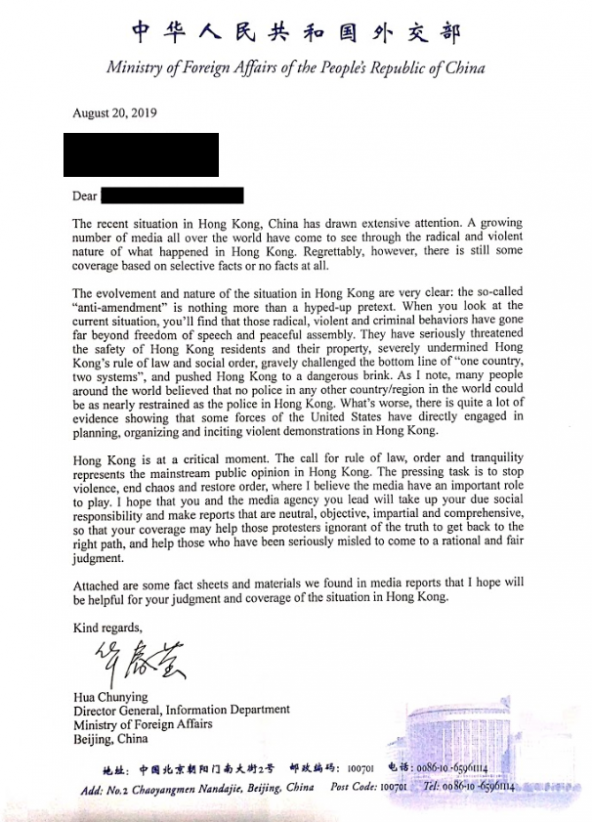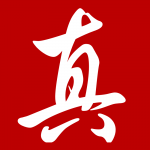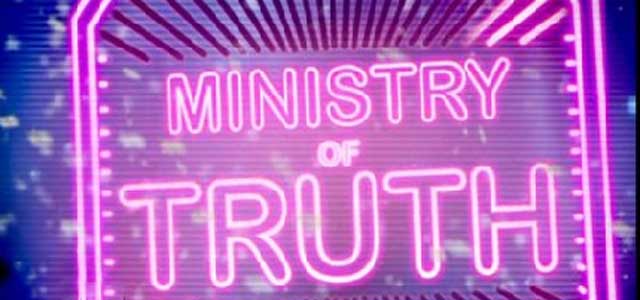
The letter above was sent this week to more than 30 international news organizations including Bloomberg, The Wall Street Journal, Reuters, Agence France-Presse, South China Morning Post, the BBC, NBC, NHK, and Asahi Shimbun. In recent weeks, Chinese authorities and state media have grown increasingly assertive in promoting their own account of ongoing protests in Hong Kong against local authorities’ handling of a now-suspended extradition bill and earlier demonstrations against it.
Hua’s appeal concisely summarizes this narrative: it emphasizes "radical, violent, and criminal behaviors" over the movement’s peaceful mainstream; obscures the movement’s scale and diversity; dismisses opposition to the extradition changes as "nothing more than a hyped-up pretext," and omits other goals entirely; portrays the movement as a threat to local prosperity, rule of law and the "One Country, Two Systems" framework; lionizes Hong Kong police, while eliding their role in escalating the situation with aggressive and indiscriminate treatment of protesters and bystanders; and alleges that the United States is the main instigator of the unrest.
The 42-page supporting document (PDF) expands on the same themes. It defends the extradition bill; emphasizes violence by protesters; alleges foreign interference; highlights Western governments’ responses to protests and riots in the past; and presents a small selection of "objective and unbiased voices of the international community." It begins by dismissing opposition to the extradition bill as either uninformed (despite repeated expressions of concern by the Hong Kong Bar Association and marches by legal professionals) or insincere:
Similar cooperation mechanisms have already been put in place between Hong Kong and foreign countries. This arrangement will not affect Hong Kong’s judicial independence at all. “One country” is the prerequisite and foundation of the principle of “one country, two systems”. As an important measure to implement this principle, different jurisdictions within China need to conduct mutual legal assistance so as to prevent safe havens for criminals.
Quite a number of Hong Kong citizens do not have much understanding of the mainland along with its legal system and judicial institution. Taking advantage of that, some people and media with malicious intentions started fear-mongering campaigns to stoke panic and block the bill’s passage in the Legislative Council.
Next comes a timeline of "savage behaviors" by "radical," "extremist," protesters or "‘fanatics,’" including the notorious assaults on suspected police infiltrators at Hong Kong airport. This concludes:
From June 9 to Aug. 6, the Hong Kong police arrested 589 people suspected of illegal assembly, rioting and assaulting the police.
What is more alarming is that anti-China forces in the West have colluded with local anti-China forces who intend to mess up Hong Kong. On multiple occasions, foreign nationals were seen meeting and talking with radical protesters. Recently, leaders of "Hong Kong independence" groups secretly met with officials of the U.S. Consulate General in Hong Kong. The day after their meeting, the groups said on social media that they plan to boycott classes in September.
It is incontrovertibly evident and without question that the Hong Kong opposition camp and radical groups have colluded with foreign forces. Certain forces in the U.S. and Britain have deliberately ignored extreme violence in the illegal protests and attempted to beautify mobsters as campaigners of "freedom, democracy and human rights."
During the recent riots, the Hong Kong Police Force has honored their duties and enforced the law with professionalism and great restraint. The Hong Kong police have been a pillar in safeguarding Hong Kong’s social security and the last shield to uphold its social stability. It has maintained its reputation as one of the world’s most outstanding police forces. From June 9 to Aug. 5, 139 officers suffered injuries on duty.
Looking back at what happened during the past two months, the ordinance amendment issues have changed in their essence and now bear the features of a "color revolution."
Should violence and chaos be allowed to continue, the safety of Hong Kong citizens’ lives and property will be endangered, and the governance authority of the SAR government, the cornerstone of the rule of law in Hong Kong, its prosperity and stability, and the "one country, two systems" will be destroyed. Citizens of Hong Kong will not allow this to happen. The people of China will not allow this to happen.
On Aug. 7, the Hong Kong and Macao Affairs Office of the State Council and the Liaison Office of the Central People’s Government in Hong Kong jointly held a symposium in Shenzhen, south China’s Guangdong Province, briefing the attendees on the central authorities’ policies on stabilizing Hong Kong’s situation. It stressed that the most pressing and overriding task in Hong Kong is to stop violence, end the chaos and restore order.
The recent violence in Hong Kong is intolerable in any civilized, rational society under the rule of law. Any illegal and criminal acts that blatantly defy the basic principle of “one country, two systems,” trample the rule of law, destroy social stability and infringe public interest will be brought to justice.
The "Facts about foreign interference in Hong Kong affairs" section begins with the full text of a 2014 BBC Newsnight report on Hong Kong activists’ participation in the Oslo Freedom Forum, and their plans "to use non-violent action as a ‘weapon of mass destruction’ to challenge the Chinese government." Next, a series of state media articles details activists’ meetings with U.S. officials; statements on Hong Kong from U.S. officials and politicians; the appearance of "American faces" and flags during the protests; and especially funding for Hong Kong civil society groups by the National Endowment for Democracy. (CDT also receives some funding from NED.)
Under "Reports on practices of foreign governments in response to violent protests," the document cites an Associated Press report on U.S. President Donald Trump’s recent tweet that “major consideration is being given to naming ANTIFA an ‘ORGANIZATION of TERROR.’” (It omits AP’s subsequent note that "it wasn’t immediately clear what he meant by that because there’s no mechanism for the United States government to declare a domestic organization a terror group.") A series of excerpts follow from Western news coverage of recent far-right protests in Portland, and counterprotests against them; 700 arrests after an Occupy Wall Street protest on the Brooklyn Bridge; the clearance of UC Berkeley’s Sproul Plaza by riot police in 2011; the declaration of emergency and activation of the National Guard in Baltimore during unrest after the shooting of Freddie Gray by police in 2015; and the arrest last month of a "known gang member" in New York for spraying policemen with water. The section concludes with transcripts of statements from 2011 by David Cameron and Theresa May, then British Prime Minister and Home Secretary, respectively, on that year’s London riots; and a Radio France Internationale report on France’s adoption of anti-riot legislation in response to "Yellow Vest" protests.
The "objective voices" come in the form of the full text of a South China Morning Post interview with Singapore’s Minister for Law and Home Affairs K Shanmugam; a state media summary of an op-ed by "Dr. Michael Borchmann, a law expert and former government official from Germany" which appeared in "the German edition of the European newspaper Nouvelles d’Europe" (whose LinkedIn company page describes it as "the most influential Chinese news organisation in continental Europe and the UK"); a Russia Today op-ed by former British MP George Galloway; and a translation of a lengthy piece by Japanese entomologist Junzo Aoyama (who describes himself as having “neither […] interest in nor knowledge of […] human society”).
Aspects of the officially approved narrative, as expressed in Hua’s letter and a set of domestic directives posted by CDT earlier this week, have been challenged from various quarters. The peaceful conduct and massive attendance at last Sunday’s demonstration offers its own rebuttal, as does mass participation in a human chain around the city on Friday. The movement’s social diversity has been amply illustrated by rallies and gestures of support from mothers, the elderly, lawyers, medical professionals, civil servants, and others.
The Hong Kong Police Force’s aggressive use of tear gas, beanbag rounds, and other tools has been verified by sources including Amnesty International and The New York Times, which last week followed up an earlier analysis of excessive force with a collection of expert views on inappropriate indoor, direct, and indiscriminate firing of tear gas cannisters. South China Morning Post, which has sometimes been accused of subservience to Beijing, has published some coverage supportive of the police, but nevertheless reported last Friday that the force had "violated all guidelines for the ‘non-lethal weapon.’" Police actions have also prompted a call for restraint and investigation by the U.N. High Commissioner for Human Rights.
Hong Kong police officials said last week that they had seen no sign of foreign interference behind the protests. Summing up the purported evidence for such interference last week, The Economist described the "black hand" narrative as "laughable and tragic at the same time": "depressing," to the extent that it has resonated among the Chinese public, and "positively alarming" in its apparent plausibility to the government itself.
In late July Tung Chee-hwa, a shipping magnate and Hong Kong’s first chief executive under Chinese rule, called the “well-organised” protests evidence of “masterminds behind the storm”, with “various signs” pointing to America and Taiwan. Communist-controlled newspapers have made much of the handful of protesters who insist on carrying American and colonial-era Hong Kong flags on marches (which is arguably more foolish than sinister). They have shared images of a “foreign commander” directing protests by smartphone, who turned out to be a New York Times journalist texting colleagues. [See a related article by AFP fact checkers.] They have also published photographs of a meeting between pro-democracy leaders and Julie Eadeh, a diplomat at America’s consulate whose job is to talk to local politicians. One such newspaper, Takungpao, called Ms Eadeh “a person of mysterious status and an expert in low-key acts of subversion”. Given that Ms Eadeh met Hong Kong’s most famous democracy activists in a hotel lobby in broad daylight, either the tradecraft of American super-spies is slipping, or the party’s media define the term “mysterious” pretty loosely. [Source]
Use of the American flag is neither very widespread nor uncontroversial among the protesters as a whole. Wilfred Chan at Dissent Magazine and Jason Buhi at Hong Kong Free Press have both argued that use of the flag is an attempt at "people’s diplomacy" to win foreign attention and support, rather than a symptom of existing interference or a calculated insult to Beijing. The protesters have indeed received messages intended as support from legislators as diverse as Republicans Mitch McConnell and Kevin McCarthy and Democrats Elizabeth Warren, Bernie Sanders and Nancy Pelosi. Responses from the executive branch have been less clear cut.
The charges of American interference come amid sharp disagreements on other fronts, from ongoing trade tensions to the deployment of American ground-based missiles in the Asia Pacific following the Trump administration’s withdrawal from the 1987 Intermediate-range Nuclear Forces Treaty. Speaking to The New York Times early this month, Claremont McKenna College’s Minxin Pei described the accusations as part of "a ‘meganarrative’ that portrays the United States as the ‘principal antagonist intent on not only thwarting China’s rise with the trade war but also fomenting trouble within Chinese borders.’"
The portrayal of the protests as an assault on the “One Country, Two Systems” framework and a pro-independence movement is also disputed. Independence is not among the protesters’ five core demands. These—full withdrawal of the extradition bill, an independent investigation of police violence, revocation of the characterisation of early protests as “riots,” release and pardon of those arrested, and universal suffrage—enjoy nearly unanimous (85-95%) support among participants in protests in early August, but as CDT founder Xiao Qiang noted in a recent NPR interview, they are typically omitted or obscured in officially approved accounts.
National insignia have been targeted, a fact often cited as evidence of separatist intent, but this has occurred more as an expression of opposition to Beijing’s long-running encroachment on the territory’s autonomy than as a rejection of the "One Country, Two Systems" framework itself. 2014 protest leader Nathan Law tweeted on Monday that "democracy and autonomy are what we are striving for. Stop labelling the protest as ‘independent movement’." The New York Times’ Andrew Higgins recently wrote, in a profile of activist Edward Leung, that "support for declaring Hong Kong an independent country has remained a tiny, fringe cause. It exists largely as a trope in Communist propaganda, which has used it to tar protesters as traitors and curb any sympathies people in mainland China might have for the protests." In an essay at Medium last year, activist and author Kong Tsung-gan discussed the marginalization of genuine independence advocacy, suggesting that what sympathy might exist toward the cause among the broader pro-democracy movement "is related to a lack of faith that the Party will ever abide by the terms of ‘one, country, two systems’, which, among other things, would mean implementing genuine universal suffrage and allowing real autonomy. [… So] they feel backed into a corner with no way out."
In an essay translated by Geremie Barmé at China Heritage, veteran commentator Lee Yee argued similarly. Edward Leung’s originally pro-independence slogan "Restore Hong Kong, Revolution of Our Times," he wrote, though cited by Lam and mainland authorities as evidence of a pro-independence agenda, "reappeared in direct response to the manner in which Lam’s government has itself been endangering the One Country, Two Systems governing framework of Hong Kong":
‘Revolution of Our Times’ in Hong Kong is about a fundamental change in the political direction of the city, one that is presently being imposed by the Beijing and Hong Kong Communist authorities; their direction is moving against the long-agreed One Country, Two Systems political arrangements in the territory. [Source]
Others have also questioned the slogan’s current status as a call for independence: one protester told SCMP’s Jeffie Lam that "if we wanted independence, then we would have called for independence."
The protesters, in other words, have aimed not to subvert but to protect "One Country, Two Systems," first by opposing a law that threatened the "firewall" between the "Two Systems," and then by advocating universal suffrage so that coexistence within "One Country" might remain viable. Former Hong Kong University professor Michael C. Davis similarly inverted official accusations in a South China Morning Post op-ed in July, arguing that "popular protests, even the 2014 civil disobedience campaign, aim to defend the rule of law" against threats such as mainland encroachment and rights-violating policing.










